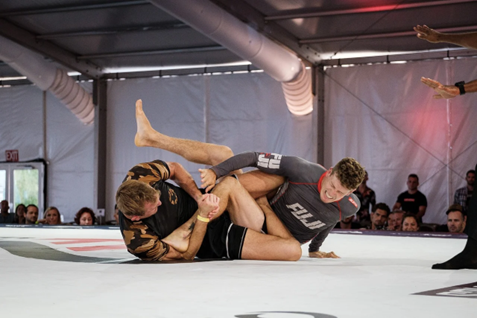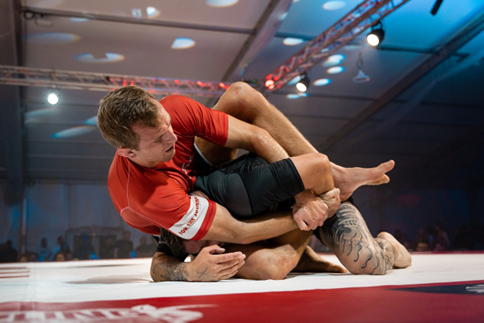In MMA, being ahead means always trying to out-think and adjust. MMA fighters’ teaching methods should be modified as the sport progresses. We shall explore some of these state-of-the-art training methods employed by modern-day professional Mixed Martial Arts practitioners to keep pace with the changing times. Current MMA athletes have adopted different approaches for increasing their performance levels and gaining competitive edges; hence, they incorporate advanced technologies and analytics, interdisciplinary training and coaching models, and mental conditioning techniques. Welcome to the realm of MMA training, where we will demystify the recent techniques revolutionizing this fast-paced, incredibly tough game.
Virtual reality training simulations
Some of the latest techniques MMA fighters apply to improve their training methods include virtual reality (VR) training simulations. By immersing themselves in virtual environments, fighters can create highly realistic scenarios and opponents as well, thus improving their reaction time, decision-making, and situational awareness.
In VR training, fighters can simulate real-world situations and perform sparring moves without the risk of injury in real sparring sessions. Furthermore, traditional approaches may have fewer options for customization compared to VR training, which is flexible enough to accommodate unique personalized requirements, thereby allowing martial arts practitioners to control their training sessions depending on the individual goals set out by them.
Neurofeedback and brain training
The confrontation of neurofeedback and brain training is one of the most progressive methods of keeping MMA fighters ahead. They can increase their mental abilities using sophisticated technologies and methodologies.
Neurofeedback monitors the brainwave activity while giving real-time feedback that teaches the mind how to operate more efficiently and effectively. That is, it helps in enhancing focus, alertness, reactivity as well as overall mental toughness thereby improving their competitive edge in and outside the ring. Integrating these strategies into MMA fighters’ workout schedules might sharpen their wits, widening their chances of victory over competitors.
Cryotherapy and recovery chambers
To keep up with the fast-changing nature of their sport, MMA fighters have taken to cryotherapy and recovery chambers. This helps them to recover faster and optimize their physical conditioning using state-of-the-art advancements.
Cryotherapy exposes one to very low temperatures for a brief period, thereby reducing inflammation, easing muscle soreness, and speeding up healing from an intense workout. In contrast, various methods, such as massage therapy, contrast baths, or compression therapy, improve recovery among patients in these chambers.
Integrating these two practices into the training regimes is beneficial as it allows MMA fighters’ bodies to recover faster between workouts, meaning they can train harder and more often without facing risks of overtraining and injuries. This innovative approach to recovery is becoming popular amongst athletes who would like to maintain a top-level performance while staying ahead of others in competition.
High-intensity interval training
Training in mixed martial arts (MMA) has seen some other fighters adopt high-intensity interval training (HIIT) to stay ahead of the pack. This type of workout allows you to alternate between brief high-intensity exercise and slow down or rest.
The effectiveness of HIIT in improving cardiovascular health, stamina, and athleticism is well established. That is why HIIT has become a mainstay in MMA training regimens, where it simulates the intensity involved during fights and improves one’s capacity to maintain an optimal performance level for longer periods.
Incorporating yoga and mindfulness practices
Yoga and mindfulness are used in MMA fighter’s routines to stay ahead during training. In addition to the physical aspect of fighting, mental strength, and emotional resilience are also important in MMA.
Yoga and mindfulness provide an all-rounded approach to training that enables fighters to achieve balance, concentration, and psychological well-being. By practicing yoga, the fighters can be more flexible and have body awareness and balance, improving their agility and reducing the possibility of getting injured.
Meditation or breathing exercises develop the art of becoming mentally stronger even in stressful situations and maintaining focus during crucial matches, among many other high-tension, high-tension moments.
Consequently, if MMA fighters include these practices in their daily exercise schedules, it would enable them to perform better physically and enhance their mental health, thus giving them a competitive edge both inside and outside the ring.
Implementing sports psychology
MMA fighters are adapting this innovative practice to include sports psychology to stay ahead in training. Unlocking untapped potential and gaining a significant advantage over their opponents can be done by delving into the mental aspects of the sport as practiced by the fighters.
Sports psychology focuses on enhancing mental skills such as motivation, confidence, and concentration, which empower fighters to overcome obstacles and perform at their best. Visualization techniques like goal setting and cognitive restructuring enable fighters to build a winning mentality, trapping self-doubt and putting away negativity using https://cbdfx.com/collections/cbd-for-pets/.
This mental training arms fighters with the necessary tools for successfully maneuvering through competitive pressure along adversity lines while still keeping optimal performance during entire careers. The game can be stepped up by embracing sports psychology for MMA fighters who will achieve new levels of success in the cage.
Cross-training in other disciplines
Fighters don’t just concentrate on MMA only but incorporate styles from other martial arts and fighting games into their training. Instead of being confined to MMA techniques alone, fighters now involve other martial arts such as Kickboxing, Brazilian Jiu-Jitsu, or Muay Thai in their workout regime.
The technique is meant to make the fighter a more complete person with skills associated with boxing, muay Thai, Brazilian jiu-jitsu, wrestling, and judo. This cross-training allows the fighter to be adaptive to different fight styles and situations, enabling them to be versatile and effective competitors with various opponents. The technique also aids in avoiding stagnation or burnout, thus protecting an athlete from boredom and disillusionment that might arise due to a lack of progress over time.
Bottom Line
MMA training is constantly changing, and fighters seek new methods to help them stay ahead. Currently, they have embraced virtual reality simulations for training and neurofeedback, among others, while cryotherapy and recovery chambers have also been used in enhancing performance and recovery, respectively, by MMA players. As a result, some of these fighters also implement other innovative practices such as high-intensity interval training, incorporating yoga and mindfulness, implementing sports psychology, or even cross-training in other disciplines that completely transform how they prepare for competition. Doing this would enable them to optimize their physical and mental conditioning, allowing them to be one step ahead of their rivals in mental and physical aspects, thus enabling them to achieve their sports goals.


